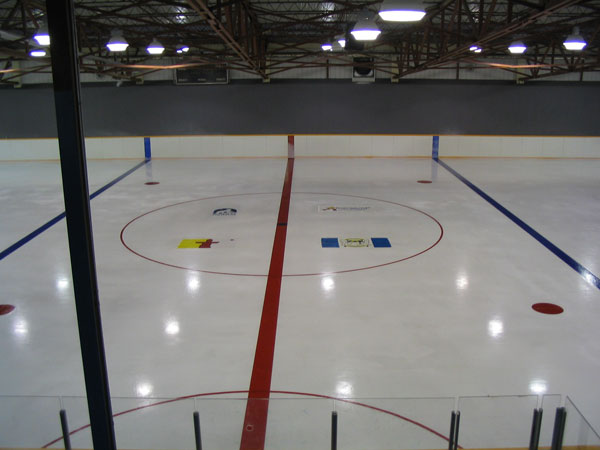Fast Ice or Slow Ice
~Margaret Yngve ~ Phys 212 Fall 2009~
 Ice skating can be done on any decently frozen ice, that is the water molecules must be in a solid state, which mandates a phase change and a constant temperature such that the required reverse in state may not happen. It has been found that skating on warmer (up to 22 degrees Fahrenheit), “slow” ice makes for a softer landing and more chipping of the ice, allowing more rhythmic and fluid skating, but also is subject to greater friction because the ice gets cut up more and can “grab” onto your skates more as you skate over it. It is these slow ice qualities such as softer landings and fluid of motion that makes the slower ice more appealing to figure skaters.
Ice skating can be done on any decently frozen ice, that is the water molecules must be in a solid state, which mandates a phase change and a constant temperature such that the required reverse in state may not happen. It has been found that skating on warmer (up to 22 degrees Fahrenheit), “slow” ice makes for a softer landing and more chipping of the ice, allowing more rhythmic and fluid skating, but also is subject to greater friction because the ice gets cut up more and can “grab” onto your skates more as you skate over it. It is these slow ice qualities such as softer landings and fluid of motion that makes the slower ice more appealing to figure skaters.
“Faster Ice” (ice between the temperatures of 5 and 16 degrees Fahrenheit) is used more often in hockey and speed skating for the specific reason that one can skate faster on hard ice because of the reduced friction, and interaction between ice skates and the ice. The specific nature of skating and the means by which the skates travel across the ice have been put into question recently by the research of Dr. Gabor Somorjai of the University of California Berkely, a chemist who has revealed the quantum mechanics that explain how ice skates actually move across the ice.